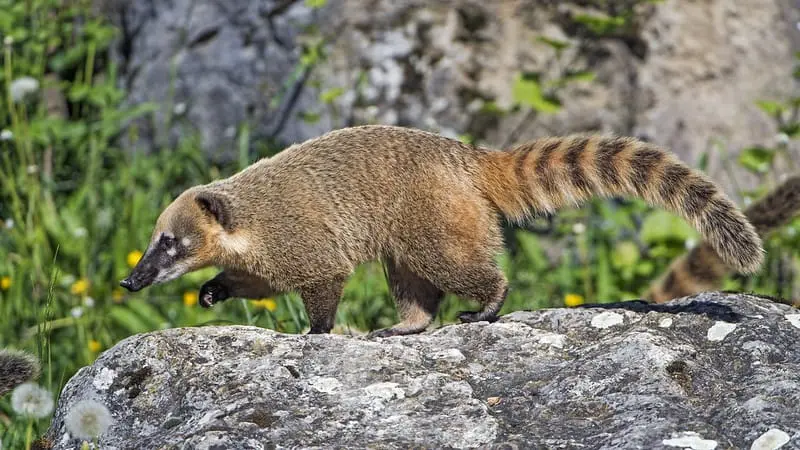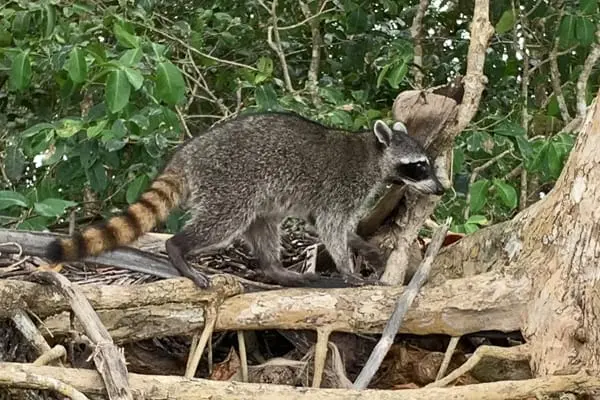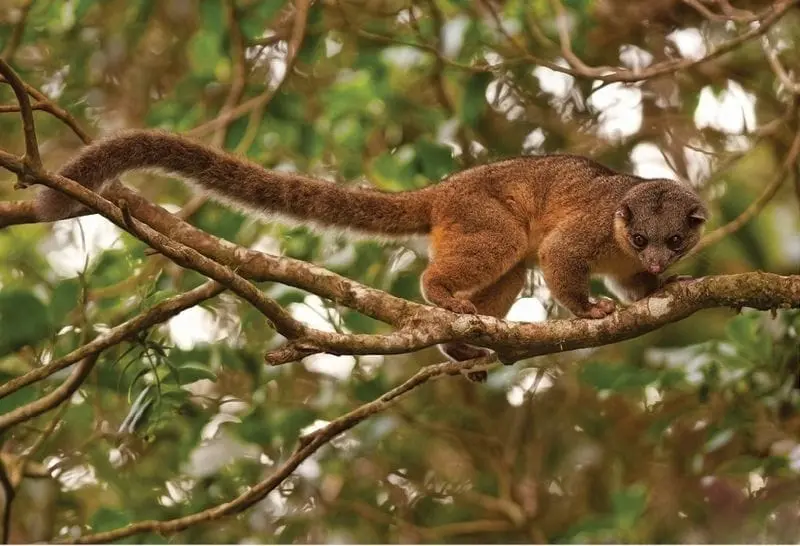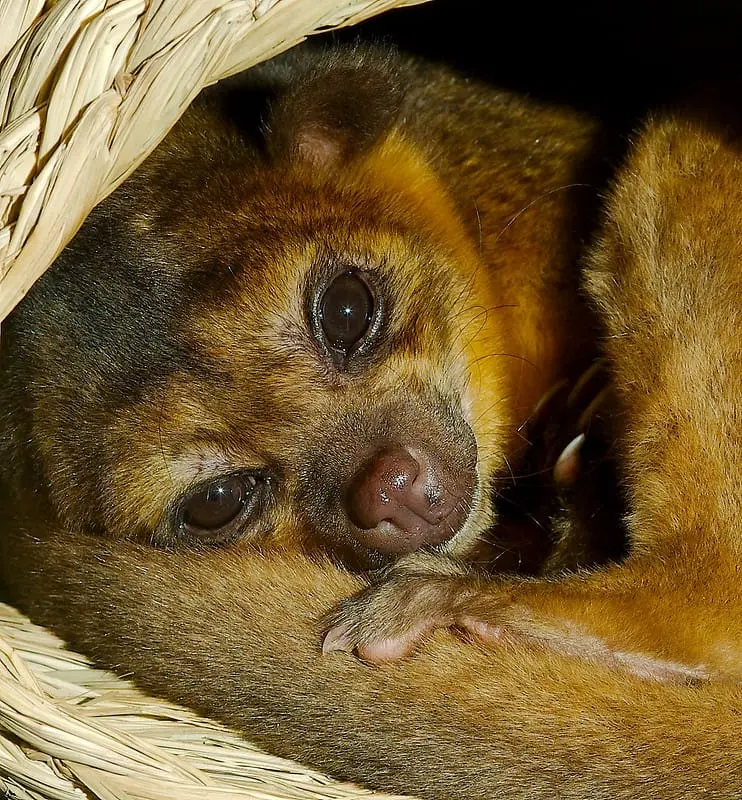Procyonids – Crab-eating raccoon and their relatives
The raccoon is a very common animal, it is not difficult to see some looking for food. It is part of the procyonidae family, which includes some small omnivores with great ability to climb trees and are mostly nocturnal, except for the coatis. There are six genus within this family, and four can be found in Brazil, these being the coatis, the Crab-eating raccoons, the Kinkajous or Honey Bears and the Olingos.
Coatis

There are three species of coatis, but only the ring-tailed is found in Brazil. It inhabits all biomes, but its presence in the Caatinga has not yet been confirmed.
Of all the procionids, the coatis have the most diverse diet. They feed mainly on insects, larvae and fruits, which makes them and other members of their family very important for seed dispersal. Occasionally, they also eat small crustaceans and fish, and have even been seen feeding on discarded industrial waste.
Although they are excellent climbers, coatis are primarily terrestrial. While other procionids are usually solitary and nocturnal, coatis tend to live in packs of up to 30 individuals or more and are diurnal.
Coatis have a certain degree of adaptability to human disturbance, but they are targets for hunting and have a high mortality rate. Despite this, they are listed by the IUCN (International Union for Conservation of Nature) as “Least Concern” for extinction.
Crab-eating raccoons

Although similar to the common raccoon, the crab-eating raccoon has longer legs and its front paws are black and less hairy. For this reason, its name in Portuguese is mão-pelada, which means hairless hand.
It is found from Central America to southern Uruguay and throughout Brazil, inhabiting all the country’s biomes, including degraded areas. Although highly adaptable, the crab-eating raccoon must live near rivers, mangroves, beaches and waterways, where most of its food comes from.
Crab-eating raccoons are omnivorous and eat fruits, crabs, amphibians, reptiles, and fish. Its sense of touch and manual dexterity are highly developed. For example, when feeding on frogs , it can carefully discard the animal’s skin and venom glands, and can even hunt frogs underwater without seeing them.
Because of their great adaptability, crab-eating raccoons are excellent swimmers, diggers, and climbers. They can catch tadpoles with great skill and easily climb trees to escape predators, rest, and build their nests, though they prefer to live on the ground.
Although the species is not considered endangered, according to the IUCN (2012) recently its population seems to be declining, probably due to hunting and the destruction of its habitat and pollution of rivers.
The Crab-eating raccoons is also called in Brazil as washer mouse, due to its peculiarity of washing everything it catches before eating.
Olingo

Olingos are very little known animals, and very little research has been done about them. In addition, their resemblance to honey bears makes analysis difficult even for experts in the field. There have been many discussions about the different species or subspecies of the genus, but a study conducted in 2013 recognized four species. One of them was only discovered in 2006.
Olingos are nocturnal, arboreal, and omnivorous, but preferring frugivory. They are found from Central America to north of the Amazon. They are often confused with honey bears, from which they are distinguished by their small size and lack of a prehensile tail.
Olingos are very vulnerable to habitat degradation: the mass destruction of the Amazon rainforest is the greatest threat to the conservation of the species. Another possible threat is the culling of the animals by the Amazonian population due to their beliefs.
Honey bear

Honey bears or kinkajous are small arboreal mammals with nocturnal and solitary habits. They are omnivorous, but their diet consists mainly of fruits. They have an expandable 12 cm (4.5 inches) tongue that helps them get at fruit and lick nectar from flowers, so they can act as pollenizers and are also great seed dispersers.
They are often confused with the olingos, but are distinguished mainly by their prehensile tails. They are found from Central America to northern Bolivia and southeastern Brazil.
There is no accurate data on how many populations of honey bears exist, but it appears to be an abundant species and there is evidence that it can adapt to human-altered environments. The species is therefore, considered “Least Concern”.
However, as an arboreal animal, it may be vulnerable to accelerated deforestation in the Amazon. In addition, there are reports of high mortality of honey bears in southern Amazonas and northern Rondonia, apparently caused by diseases transmitted by domestic animals.
Read more:
Caracterização de micro-habitats do guaxinim (Procyon cancrivorus)
Alimentación diurna del mapache cangrejero sobre una rana paradoxal, con una revisión de su dieta
Avaliação do risco de extinção do Jupará Potos flavus (Schreber, 1774) no Brasil
Taxonomic revision of the olingos with description of a new species, the Olinguito
Avaliação do risco de extinção do Janaú Bassaricyon alleni (O. Thomas, 1880) no Brasil
Frugivoria e dispersão de sementes por quatis no Parque nas Mangabeiras, Belo Horizonte, MG
